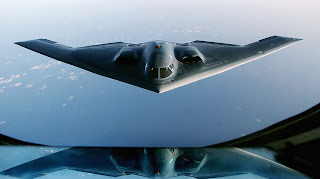I think this article is important. It sums up most clearly Kim Jong-un's mindset and intent. Too often we dismiss such statements as propaganda and thus we do not take them seriously. But many of their past statements have shown exactly what they intended to do and then actually did do. Excerpts:
…saying that his country was determined to rebuild its economy in the face of international sanctions while simultaneously expanding its nuclear weapons arsenal, which the ruling party called “the nation’s life.”…
But a growing number of analysts also say that North Korea seems to have no intention of giving up its nuclear arms. “The enemies are using both blackmail, telling us that we cannot achieve economic development unless we give up nuclear weapons, and appeasement, saying that they will help us live well if we choose a different path,” Mr. Kim was quoted as saying during the meeting on Sunday.…
On Sunday, officials at the plenary meeting made that stance formal, adopting a statement calling the North’s nuclear weapons a “treasure” that will not be traded for “billions of dollars,” because they “represent the nation’s life, which can never be abandoned as long as imperialists and nuclear threats exist on earth.
But we have to understand that the Myanmar "model" is not one that the north will except (just like they will except neither the Libya nor the Iraq "models"). To accept them in their mind means that the Kim Family Regime will end up like Qaddafi and Saddam. Per the statements above Kim flatly rejects this.
Both President Obama and his national security adviser, Thomas E. Donilon, have recently urged Mr. Kim to learn from Myanmar, where changes initiated by new leaders have resulted in billions in debt forgiveness, large-scale development assistance and an influx of foreign investment. It North Korea continues on its current path, they said, it will face more sanctions and deeper isolation.
However I think the highlighted sentence below is exactly right. Kim is playing to his domestic political audience, elite and people alike but he is also looking to be able to gain political and economic concessions from the international community.
American and South Korean officials still hope they can persuade North Korea to abandon its nuclear weapons through sanctions and diplomacy, especially if China agrees to use its economic leverage with the North. Many regional analysts and officials have suggested that the North’s recent strident language, including threats to attack the United States and South Korea with nuclear weapons, is intended not only to solidify Mr. Kim’s military credentials at home but also to draw the United States back to the negotiating table.
But that is the paradox that the regime does not understand. It believes that the tension it causes will coerce the international community into relenting and giving them what they want but unfortunately most of the key players in the international community are resolved not to give in to the blackmail diplomacy and given the current situation they find it politically unacceptable even if policy makers were inclined to do so.
V/R
Dave
North Korea Vows to Keep Nuclear Arms and Fix Economy
Published: March 31, 2013
SEOUL, South Korea — North Korea’s leader on Sunday announced a “new strategic line” that defied warnings from Washington, saying that his country was determined to rebuild its economy in the face of international sanctions while simultaneously expanding its nuclear weapons arsenal, which the ruling party called “the nation’s life.”
Related
- North Korea Threatens to Close Factories It Runs With South(March 31, 2013)
- Pyongyang Blusters, and U.S. Worries About Quieter Risks(March 30, 2013)
- Global Powers Cast Wary Eye as Korean Tension Escalates (March 30, 2013)
The North’s nuclear weapons “are neither a political bargaining chip nor a thing for economic dealings,” the official Korean Central News Agency reported, citing remarks from the plenary meeting of the Central Committee of the ruling Workers’ Party, which adopted new guidelines for the country.
The North’s leader, Kim Jong-un, presided over the meeting, which South Korean news media said was convened for the first time since 1993. The rare event came a day before the planned gathering of the North’s rubber-stamp Parliament, the Supreme People’s Assembly, which was expected to follow up on the new guidelines adopted by the party.
The party meeting took place against the backdrop of joint military exercises in South Korea involving American and South Korean forces. On Sunday, American F-22 stealth fighter jets were flown from a base in Japan to South Korea to join the exercises, according to an American military statement. In past weeks, B-52 and B-2 bombers offered a demonstration of American air power as part of the exercises.
American and South Korean officials still hope they can persuade North Korea to abandon its nuclear weapons through sanctions and diplomacy, especially if China agrees to use its economic leverage with the North. Many regional analysts and officials have suggested that the North’s recent strident language, including threats to attack the United States and South Korea with nuclear weapons, is intended not only to solidify Mr. Kim’s military credentials at home but also to draw the United States back to the negotiating table.
But a growing number of analysts also say that North Korea seems to have no intention of giving up its nuclear arms. “The enemies are using both blackmail, telling us that we cannot achieve economic development unless we give up nuclear weapons, and appeasement, saying that they will help us live well if we choose a different path,” Mr. Kim was quoted as saying during the meeting on Sunday.
(Continued at the link below)



